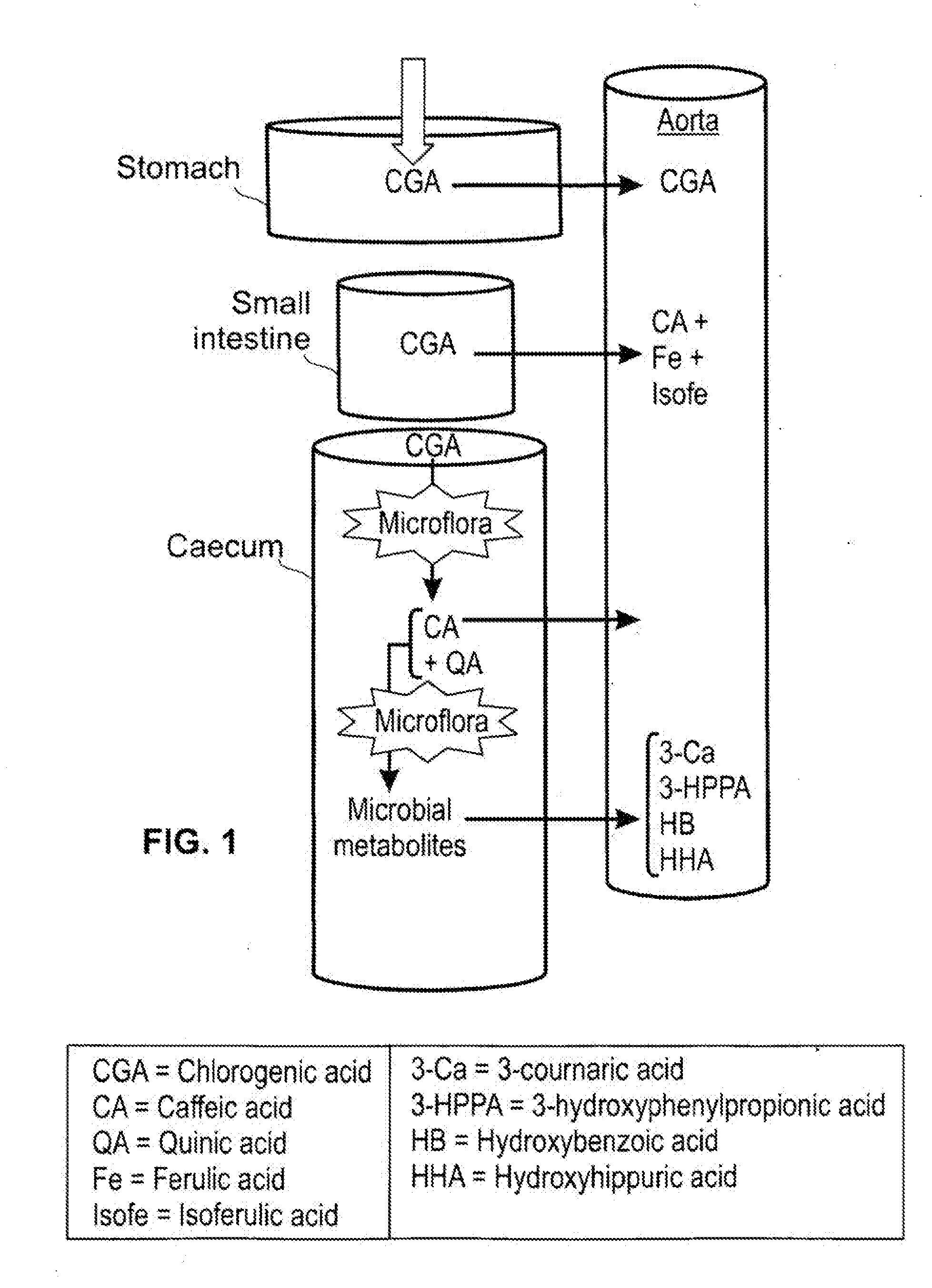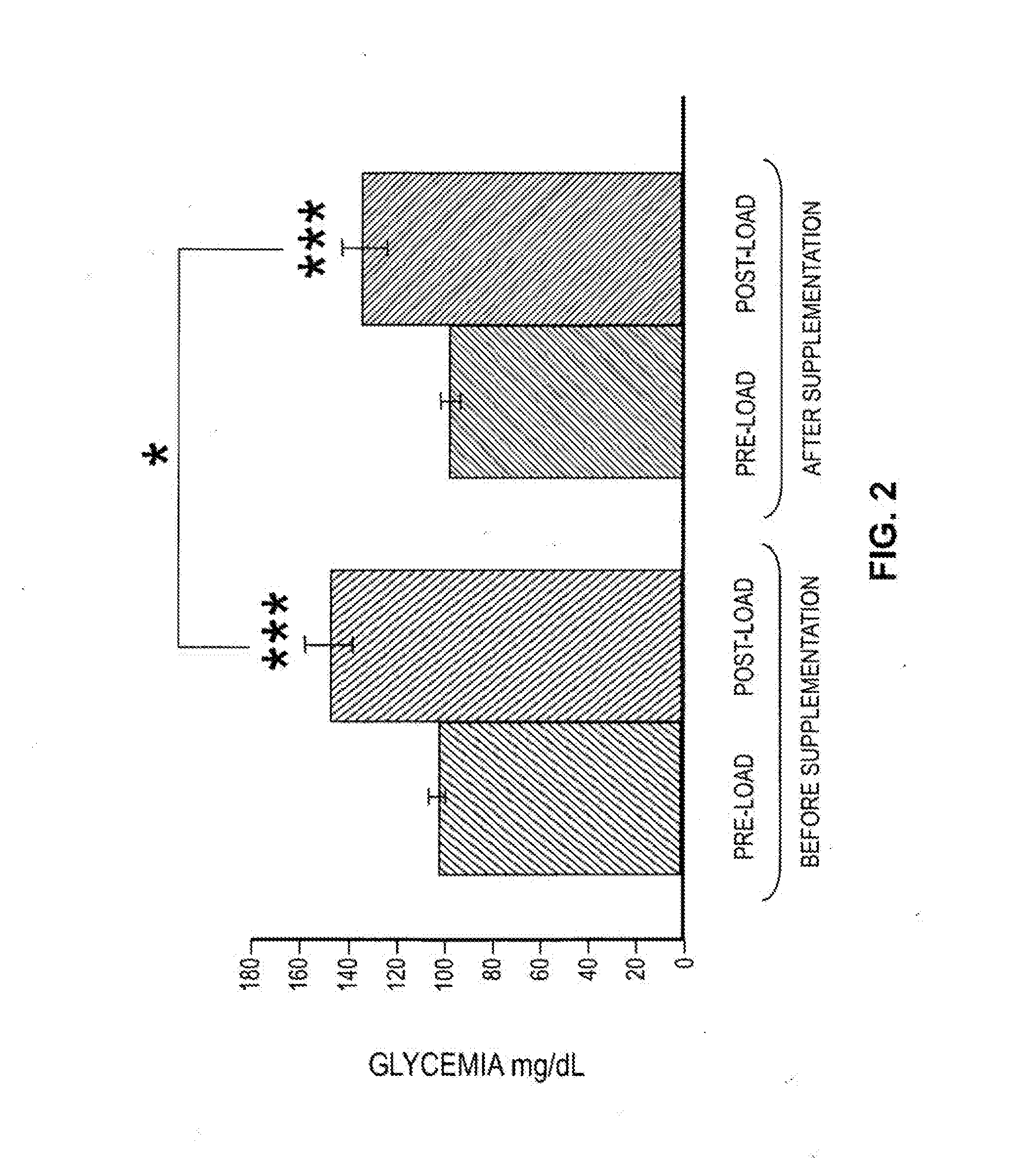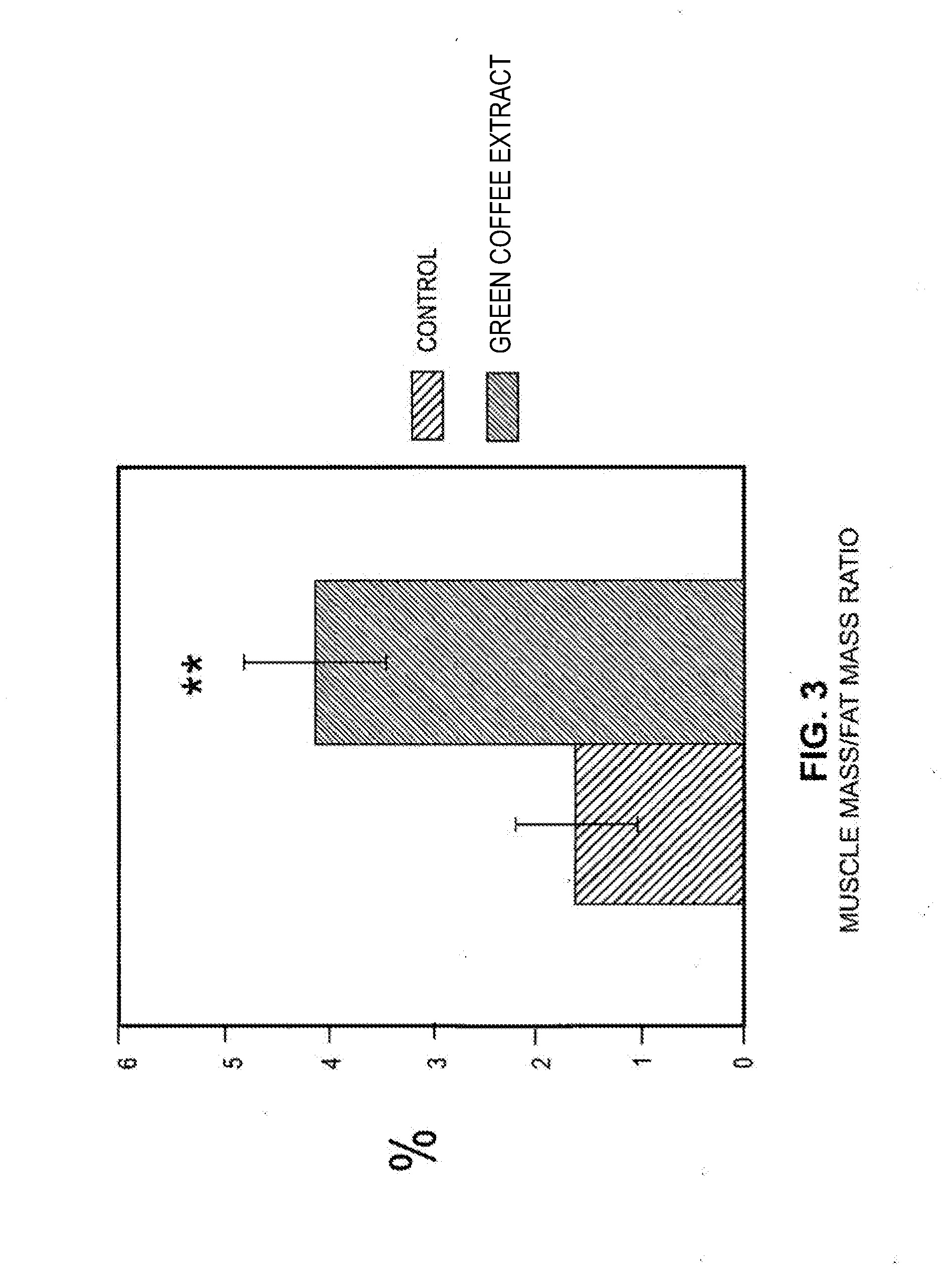Effects of a decaffeinated green coffee extract on body weight control by regulation of glucose metabolism
a green coffee and glucose metabolism technology, applied in the direction of organic active ingredients, plant/algae/fungi/lichen ingredients, plant ingredients, etc., can solve the problems of increasing the risk of cardiovascular disease, and achieve the effects of reducing glycemia in humans, reducing glycemia, and reducing glycemia
- Summary
- Abstract
- Description
- Claims
- Application Information
AI Technical Summary
Benefits of technology
Problems solved by technology
Method used
Image
Examples
example 1
[0050]In some embodiments, the green coffee extract comprises, Nutritional profiles of a green coffee extract. Nutritional analyses were conducted according to the European pharmacopoeia. Table 4 shows the nutritional value of the green coffee extract used in the examples reported herein.
TABLE 4Nutritional profile of the green coffee extractCompoundConcentrationLoss of drying [JO Mar. 11, 1977]5%Proteins (Nx6.25) [JO Mar. 11, 1977]9%Lipids [JO Mar. 11, 1977]1%Ash [JO Mar. 11, 1977]10%Soluble sugars [JO Mar. 11, 1977]24%Caffeine [HPLC]1%Total polyphenols [Folin-Ciocalteau]50%(tCGA) Total chlorogenic acids [HPLC]45%(5 CQA) 5-caffeoylquinic acid [HPLC]>10%Cafestol [HPLC]Kahweol [HPLC]TOTAL100%
[0051]The ratio between 5-caffeoylquinic acid (5-CQA) and total chlorogenic acids (tCGA) (5-CQA / tCGA in Table 4) of the green coffee extract is between 0.2 and 0.3.
example 2
HPLC Chromatogram of the Green Coffee Extract
[0052]The high-pressure liquid chromatography chemical fingerprint for a green coffee extract is presented in FIG. 6. The method for performing this analysis was as follows: HPLC-DAD was achieved using a column RP-C18 (5 μm-250×4.6 mm) at 55° C. The flow rate was 0.8 mL / min, and the elution was monitored at 330 nm. The mobile phases were (A) distilled water+H3PO4 0.002M, and (B) acetonitrile. A solution of 100% A was maintained during 8 min, increased by linear gradient to 35% A and 65% B by volume after 35 min total time; followed by a linear gradient of 100% A after maintaining this composition for 10 min; the system was then re-equilibrated to the initial composition. The content of CGA from 10 batches of green coffee extract reported as mean±standard deviation (SD) is shown in Table 5. In addition to CGA, the extract the contents of which are shown in Table 5 includes 0.99 wt.% of caffeoyl-tryptophan±a standard deviation of 0.09%, and...
example 3
Composition of Total Chlorogenic Acids (tCGA) and 5-Caffeoylquinic Acid (5-CQA) in Several Coffee Extracts
[0053]Table 6 shows the composition of chlorogenic acids (tCGA) and 5-caffeoylquinic acid (5-CQA), as well as the ratio 5-CQA / tCGA, of several commercial extracts. All samples were analyzed using the HPLC method described in Example 2. The last two rows include the values of the green coffee extract described in this invention.
TABLE 6Composition of total chlorogenic acids (tCGA) and 5-caffeoylquinic acid(5-CQA) in several coffee extracts.RatiotCGA5-CQA / Coffee extract(HPLC)5-CQAtCGASpecieGreen coffee extract according46.4112.550.27C. robustato the present inventionCommercial sample 15.572.20.39C. arabicaCommercial sample 26.072.20.36C. arabicaCommercial sample 35.551.980.36C. arabicaCommercial sample 450240.48C. arabicaCommercial sample 535180.51C. arabicaCommercial sample 645190.42C. arabicaCommercial sample 72750.19C. arabicaCommercial sample 8 (Batch 1)53 / C. arabicaCommercial ...
PUM
| Property | Measurement | Unit |
|---|---|---|
| weight ratio | aaaaa | aaaaa |
| weight loss | aaaaa | aaaaa |
| flow rate | aaaaa | aaaaa |
Abstract
Description
Claims
Application Information
 Login to View More
Login to View More - R&D
- Intellectual Property
- Life Sciences
- Materials
- Tech Scout
- Unparalleled Data Quality
- Higher Quality Content
- 60% Fewer Hallucinations
Browse by: Latest US Patents, China's latest patents, Technical Efficacy Thesaurus, Application Domain, Technology Topic, Popular Technical Reports.
© 2025 PatSnap. All rights reserved.Legal|Privacy policy|Modern Slavery Act Transparency Statement|Sitemap|About US| Contact US: help@patsnap.com



